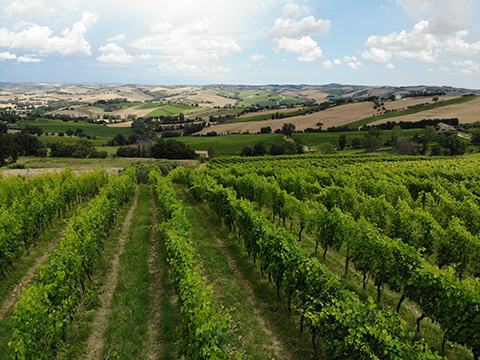
Col di Corte has been working organically both in the vineyard and in the winery since 2012. With the start of the 2016 season, after following a course with Nicolà Joly and Stefano Bellotti, they have also begun to use biodynamic preparations.
Grape Collective talks with winemaker Claudio Caldaroni and co-owner Giacomo Rossi.
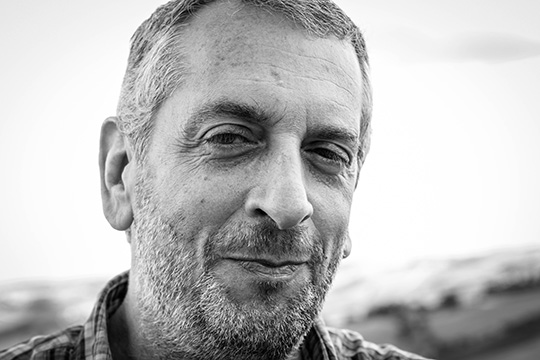
(Photo Giacomo Rossi)
Christopher: So, Giacomo, Claudio, tell us a little bit about the history of Col di Corte.
Giacomo Rossi: Col di Corte was born between 2010 and 2011. We bought the land in that period. And the first thing we did was to make the conversion from the conventional agriculture to the organic. And we ended the conversion in 2015 and in that period we started to use the biodynamic treatments. And now, we are completely involved in the biodynamic agriculture.
This is the most important thing we started to do in Col di Corte, to quit all the chemicals, additives, and start to pay attention to the soil. Mainly to the soil, to the grapes, and this is the work that Claudio does here. Working on the vineyards and in the cellar.
So, Giacomo, before you got into the wine business, you were making documentary films. And you made a documentary film about wine. Talk about that experience.
Giacomo: It was in that period, I don't know for strange reasons, but all my life, pushed me to the wine. So, for me it has been a very important experience because I discovered the natural winemaking because the documentary you are talking about is Natural Resistance. And in that documentary there were four winemakers talking about their own work. So it has been very important for me.
Also, for my production work. Having understood some things about wine.
What does natural wine mean to you?
Giacomo: It's hard to say because there are many discussions. I think that the yeasts are an important element. I think that the attention that you put in the vineyard on the soil is very important. So not to use chemical products for the vineyards. And we can have a discussion of hours about the sulfites but this is the most important thing. I think in general it is the feeling that you must have for the lands, for the grapes, and the respect that you should have for the soil and for the elements that helps you to make wine.
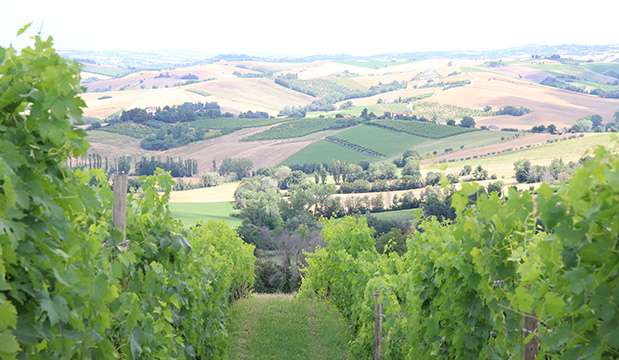 Claudio, you converted to biodynamics. What's involved with becoming a biodynamic winery?
Claudio, you converted to biodynamics. What's involved with becoming a biodynamic winery?
Claudio Caldaroni: It was not difficult, it was just to have the idea that all the bodies of the vineyards are interwoven. So you do not have to put your concentration on a single plant or a single sulfur treatment, but you have to consider the world. And the world vineyards have to grow in the best way. So biodynamic is that way for us.
And what kind of treatments do you use with biodynamics that help the soil?
Claudio: The 500 treatment. And what I do right here is I call infusion, like a tea. Using wild herbs that grow here. Because those kinds of herbs are like an expression of this place. So we use it to have plants that grow up better.
And Giacomo, talk a little bit about Jesi, the area, and why it's such a great place for Verdicchio.
Giacomo: The kind of grape started to be developed in our area because over time, people discovered that that grape can be well-adapted to the area. In this area, in the Castelli di Jesi, that is very different from Matelica, we face the seaside. We have the hills that go straight to the seaside. In Matelica, it is different because it's almost in the mountains, we are in the hills close to the seaside. So this is the main influence how Castelli di Jesi gives the characters to the Verdicchio.
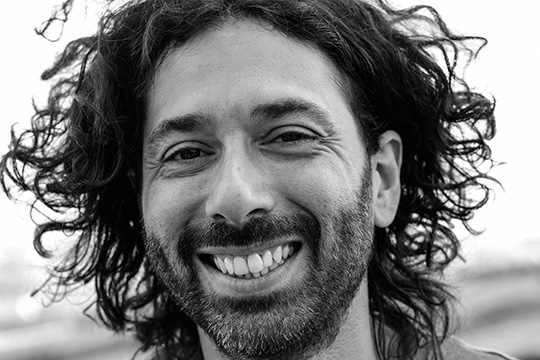
(Photo Claudio Caldaroni)
And talk a little bit about Verdicchio. Some people consider it to be Italy's great white grape. How would you describe it to somebody who had never tasted Verdicchio?
Giacomo: For me, this is difficult to answer, because I think that Verdicchio absolutely has some aspects that make differences between our grapes, the acidity, the way that Verdicchio grows, the potential. But I think what is important, is the way that the vinification is made and how it is treated in the vineyards. So, I like to say that all of us, I say all of us considering all the producers who are in this area, have a different Verdicchio.
So I don't like to talk about aspects that can be considered typical for all the Verdicchio production. Because in this area, there has not been a deep analysis, for example, of the soils, of what the French call terroir. But there are many differences here. And this is something that for me is interesting in general. In Italy, for the wine, for the big quantities of grapes, all the people make something different. Not talking about white flowers and the bitter notes that sometimes, reading the books, are related to the Verdicchio. To have these differences in the Verdicchio wines and in the Verdicchio cultivation.
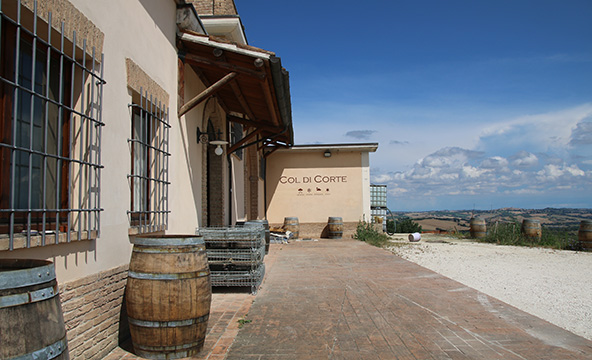
So, Claudio, Le Marche. Many people don't know about Le Marche. It's sort of a jewel of a region that needs to be more discovered. How would you describe it to somebody who has not been here before?
Claudio: I think in the Marche region we have a wonderful combination between agriculture and views. So I think it is good to visit because we have mountains and the sea in just, something like 80 kilometers. So it's not so far, and the view is changed in a very short period of time.
Claudio, in Le Marche, you have the mountains and you have the sea. Talk a little bit about the food culture here, because there are many different areas that you can get influences from.
Claudio: We have a lot of small villages with a deep food tradition, and joined to wine. So you can consider the Verdicchio with the Adriatic seafood that is very particular because it's a salty fish. So it's very good with Verdicchio. In the countryside you have a lot of different kinds of meats, chicken, and different ways to cook.
 Claudio how would you describe the terroir here at Col di Corte?
Claudio how would you describe the terroir here at Col di Corte?
Claudio: Right here, I think it's a very particular terroir. We have northeast exposition from this part of the vineyard and we don't have just clouds, but sun too. So I think it's the most important difference between here and other places in the Verdicchio area. Because the sand is a very important element that we find influences the wines. And then in general, we have white, cold winters, maybe sometimes we have snow. We usually have wet hot summers so it's usually very good for grape growing.
And how has the winemaking evolved since you started here at Col di Corte?
Claudio: Well, I think in the beginning I was the kind of winemaker that maybe spent much more time in the winery and less time in the vineyard. Right now, in the last three years, I've changed everything and maybe I stay 90% of my time in the vineyard. So the difference, maybe I changed my mind during this time because it's much more important to have healthy grapes, good grapes, and to have care of the vineyards, and then what I think, the work in cellar, is just easy.
So you started the conversion to organics in 2012. How have you seen the soils evolve over time?
Claudio: Yes, I saw a huge difference in everything. Not just the soil, but the wild grass. We keep all the grass naturally. This is very important.
Take a 360-degree virtual reality tour of Col di Corte in Le Marche, Italy. This experience only works in certain browsers including Google Chrome. You can also experience the VR tour directly on Youtube.
So you make three kinds of Verdicchio. How are they different?
Claudio: The classico is the first picking, usually in a part of the vineyard that we have much more freshness. The superior is just from a vineyard that is in Vini Tobia, that is a typical name of this place. In this place we have the best conditions of ripeness, sugars, and balance with acidity. The reserva is the last picking from Tobia vineyards. We usually start in the middle of September and we end the picking in the first week of October.
For more on Le Marche check out our interview with Bisci.
Photography and videography by Piers Parlett
Video editing by Max High-Cuchet














